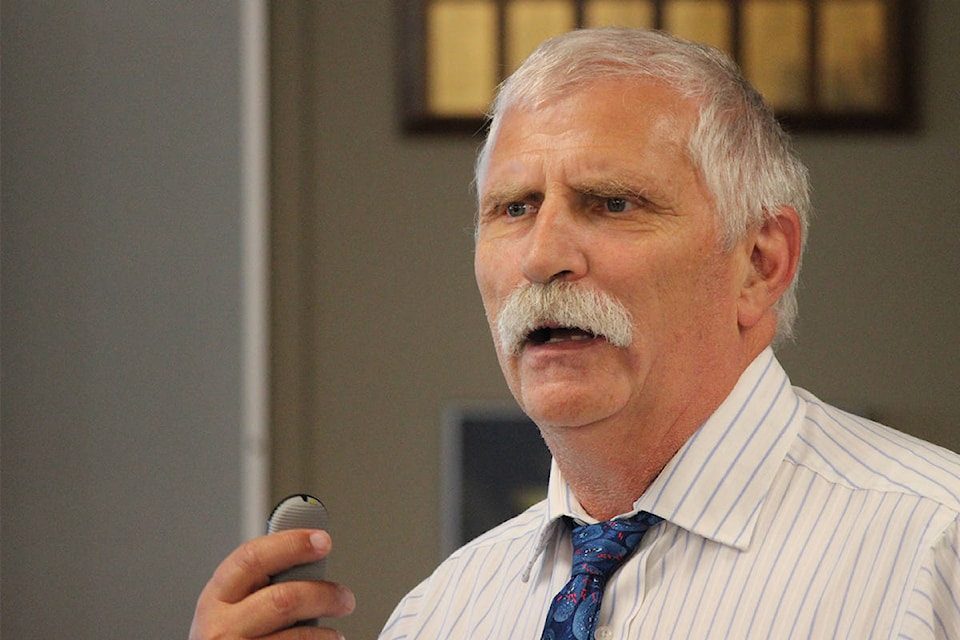Vaping could be just as addictive for students as traditional cigarettes, says a health authority official for the Nanaimo-Ladysmith area.
In a presentation Wednesday, Dr. Paul Hasselback, Island Health medical health officer, told Nanaimo Ladysmith Public Schools’ education committee that vaping is an electronic delivery mechanism for various substances, most often nicotine, with potential for cannabinoids. A 2016-17 Canadian Student Tobacco, Alcohol and Drugs survey found that 23 per cent of respondents had tried an e-cigarette, and the U.S. Center for Tobacco Products suggested a 78-per cent increase in e-cigarette usage among high school students between 2017 and 2018, according to presentation data.
Hasselback said nicotine and youth are not a good combination.
“I have a listing of a variety of different health problems here, but the one that is turning out to be a real issue is the development of a nicotine dependence and while vaping may lead to that nicotine dependence, oftentimes what we’re seeing is that it’s also the gateway into the use of more traditional cigarettes,” said Hasselback.
RELATED: Canadian teen vaping spiked 74 per cent in one year, says study
RELATED: B.C. students taken to hospital after playing with vaping device
RELATED: Health officials on alert after reports of vaping illnesses
Approximately 40 per cent of individuals who smoke use both e-cigarettes and traditional cigarettes, said Hasselback. It’s safe to say vaping is a rapidly growing phenomenon, particularly amongst youths, he said.
“They are the group that the marketing is heading to,” said Hasselback. “It’s not harmless. I think we need to learn a little bit more about those long-term health risks and unfortunately, that will happen over time. The addiction component, or the dependency on nicotine, is extremely difficult to reverse. Anybody who’s ever smoked recognizes how difficult that is. We’re probably looking at a dependency that’s as severe as to a cigarette and perhaps even more so because of some of the electronic delivery mechanisms.”
Dale Burgos, school district spokesman, said vaping, like smoking, is prohibited on all school grounds. When asked about promotion of vaping prevention in the district, he said community youth-family support workers and physical health education teachers have received information on vaping through information sessions. Info about vaping is also discussed when staff and district administration meet, he said.
Charlene McKay, school board chairwoman, said it is an issue that has been raised by parents a number of times over the years.
“It is something we know is still happening and we do our best to monitor and take care of those concerns as they arise, but I think really now, we need to start focusing on what we can do to help the students understand the potential impacts,” said McKay.
In an e-mail, Jessica Krog-Irving, Nanaimo District Parent Advisory Council vice-chairwoman, said the council does not support underage vaping and will be happy to support any district programming on smoking and vaping prevention and cessation.
Hasselback did say that vaping may be a safer alternative for people already smoking cigarettes.
“Vaping is probably a better choice, said Hasselback. “However, it’s not a choice for someone who’s never developed that dependency, which is where our youth are.”
reporter@nanaimobulletin.com
Like us on Facebook and follow us on Twitter
